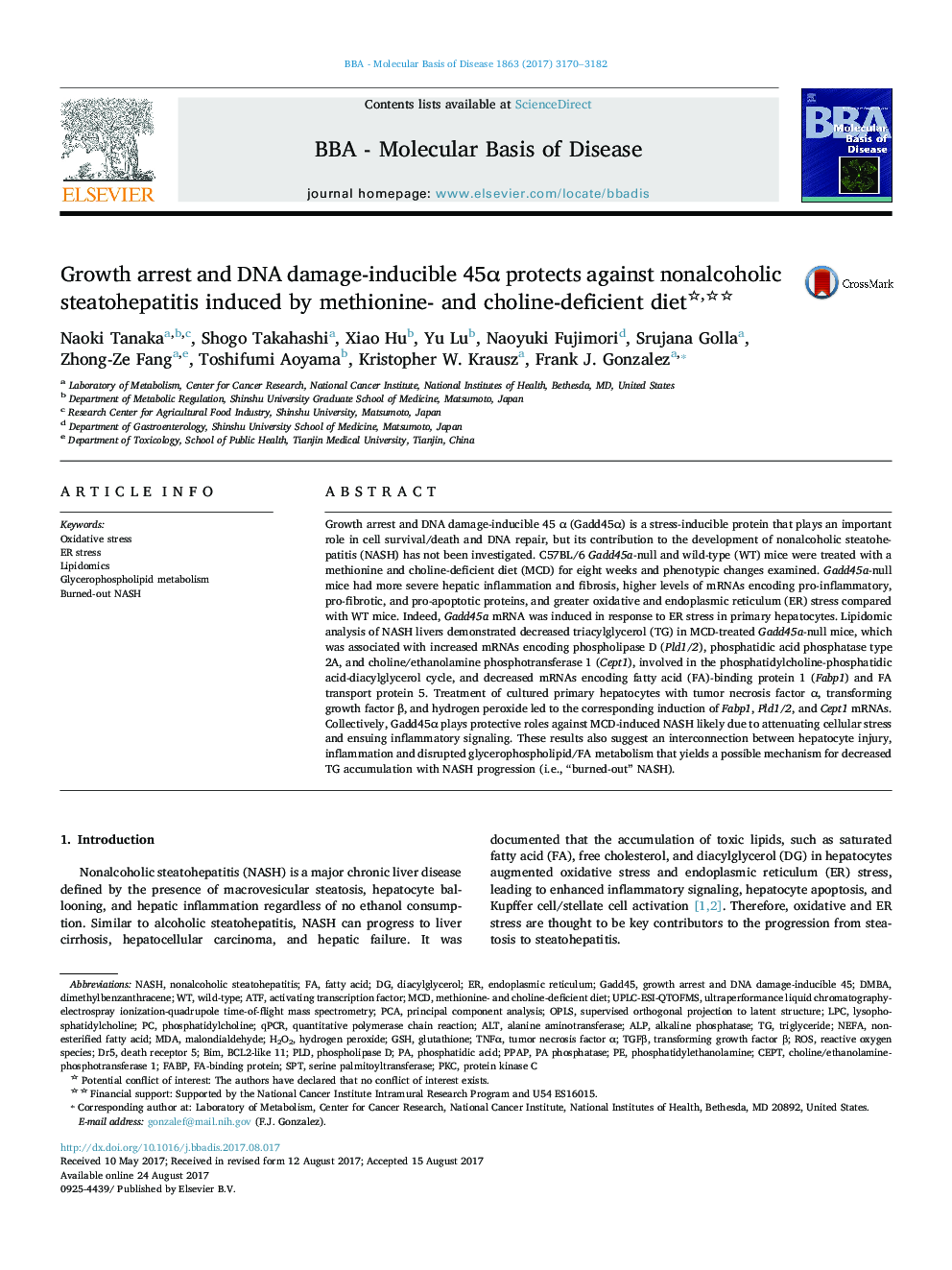| Article ID | Journal | Published Year | Pages | File Type |
|---|---|---|---|---|
| 5500935 | Biochimica et Biophysica Acta (BBA) - Molecular Basis of Disease | 2017 | 13 Pages |
â¢Gadd45α was induced by endoplasmic reticulum stress in hepatocytes.â¢MCD-treated Gadd45a-null mice exhibited more severe hepatitis and liver fibrosis.â¢Liver lipidomics showed decreased TG in MCD-fed Gadd45a-null mice.â¢Inflammatory signaling and oxidative stress can modulate glycerophospholipid metabolism.â¢A novel mechanism of decreased fat deposition in advanced stage NASH was proposed.
Growth arrest and DNA damage-inducible 45 α (Gadd45α) is a stress-inducible protein that plays an important role in cell survival/death and DNA repair, but its contribution to the development of nonalcoholic steatohepatitis (NASH) has not been investigated. C57BL/6 Gadd45a-null and wild-type (WT) mice were treated with a methionine and choline-deficient diet (MCD) for eight weeks and phenotypic changes examined. Gadd45a-null mice had more severe hepatic inflammation and fibrosis, higher levels of mRNAs encoding pro-inflammatory, pro-fibrotic, and pro-apoptotic proteins, and greater oxidative and endoplasmic reticulum (ER) stress compared with WT mice. Indeed, Gadd45a mRNA was induced in response to ER stress in primary hepatocytes. Lipidomic analysis of NASH livers demonstrated decreased triacylglycerol (TG) in MCD-treated Gadd45a-null mice, which was associated with increased mRNAs encoding phospholipase D (Pld1/2), phosphatidic acid phosphatase type 2A, and choline/ethanolamine phosphotransferase 1 (Cept1), involved in the phosphatidylcholine-phosphatidic acid-diacylglycerol cycle, and decreased mRNAs encoding fatty acid (FA)-binding protein 1 (Fabp1) and FA transport protein 5. Treatment of cultured primary hepatocytes with tumor necrosis factor α, transforming growth factor β, and hydrogen peroxide led to the corresponding induction of Fabp1, Pld1/2, and Cept1 mRNAs. Collectively, Gadd45α plays protective roles against MCD-induced NASH likely due to attenuating cellular stress and ensuing inflammatory signaling. These results also suggest an interconnection between hepatocyte injury, inflammation and disrupted glycerophospholipid/FA metabolism that yields a possible mechanism for decreased TG accumulation with NASH progression (i.e., “burned-out” NASH).
Graphical abstractDownload high-res image (182KB)Download full-size image
